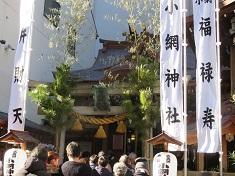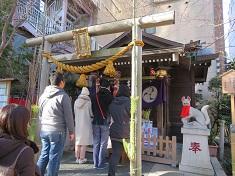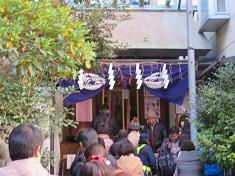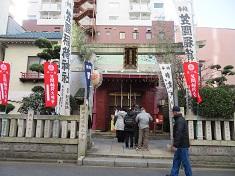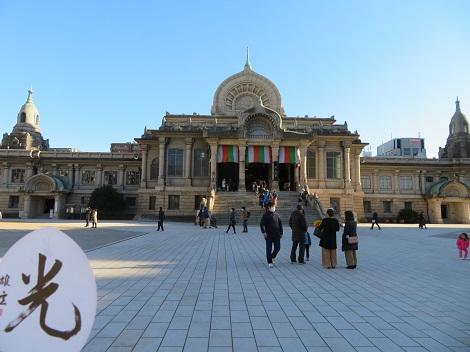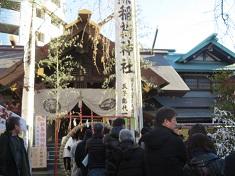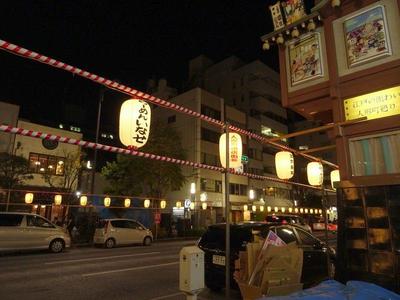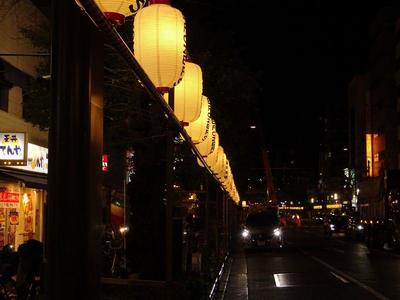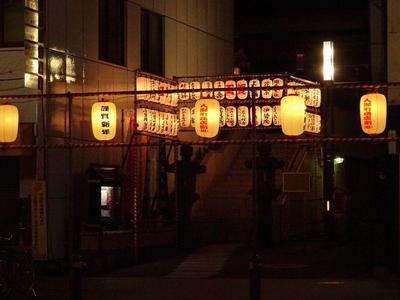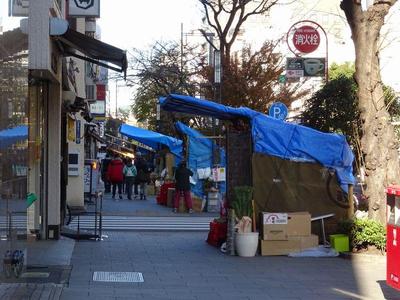Hello. This is a new correspondent, Hanes.![]()
![]()
Although it has been a little vacant, it is a continuation of [Chuo-ku sightseeing certification measures] river and bridge.
(Click here for articles on rivers and bridges so far → (1) and (2))
This time, it is said that the junction of the three rivers, the bridge before and after that, and the four bridges are featured.
First of all, about the confluence of the three rivers and the bridge before and after that.
Suddenly, it's a problem!
・What is the first bridge to be built after the Nihonbashi River joins the Sumida River?
・Where is the Nihonbashi River divided into the Kamejima River near (place name)?
・What is the first bridge to be built after the Kamejima River joins the Sumida River?
I don't dare to answer this time, but those who can't answer the above problem suddenly.
Why don't you check before the test?![]()
Next, it is said that the characteristics of the bridge 4 can be effectively remembered by actually seeing, writing (drawing)!
■Sumida River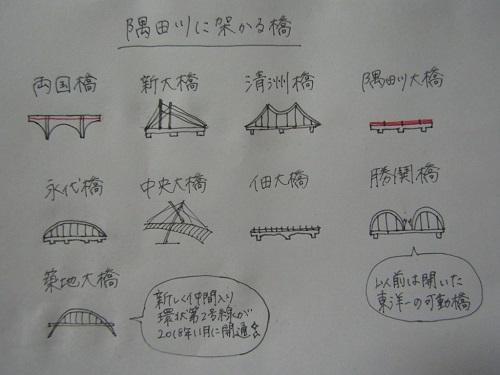
(Even if you don't have a picture, you won the game ![]() if you can input the characteristics.)
if you can input the characteristics.)
・Ryogoku Bridge (bridged after the great fire of the Meiryaku era. At that time, "Ohashi". Origin of bridge name → (1)
・Shinohashi ("Human Helping Bridge" that saved the lives of the people of Hashigami after the Great Kanto Earthquake)
・Kiyosu Bridge (a suspension bridge in Cologne, Germany) is modeled. Origin of bridge name → (1)
・Eitai Bridge (bridge to celebrate the 50th anniversary of Tsunayoshi Tokugawa's fifth generation. Japan's first steel truss bridge as a road bridge.
A tram was laid in 1904.
・Chuo-ohashi Bridge (between Shinkawa and Tsukuda. There is a "Messenger statue" commemorating friendship with Paris and Seine. )
・Tsukuda-ohashi Bridge (bridged in 1964 instead of Tsukuda's ferry). Tsukuda Bridge was removed due to the reclamation of the Tsukuda River. )
・Kachidokibashi (at the time of completion, it is called "the best movable bridge in the Toyo" and jumps five times a day.
In 1905, it began with a Kachidoki handed over to commemorate the fall of Port Arthur in the Russo-Japanese War. )
・Tsukiji Ohashi (a new bridge where Ring Route 2 passes.)
■Nihonbashi River
・Toyomi Bridge (It was also called Otome Bridge at the time of the bridge in 1698. The design looks like a ladder beside it.
The surrounding scenery is also described in Kitahara Hakushu's "Okawa Scenic" and Kafu Nagai's "Shokutei Nijo". )
・Minato Bridge (between Shinkawa and Hakozaki. The origin of the bridge name is that it corresponds to the entrance of Edo Minato.
・Kayaba Bridge (In the past, Minamizume was the shore of Kayaba (a storage area where kaya is cut and piled up), which is the origin of the bridge name.)
・Armor Bridge (a streetcar ran in Taisho-Showa. "Maison Konosu" and "Armor handing" are required. )
・Edobashi (Edobashi Hirokoji was maintained after the great fire of the Meiryaku era. In the Edo period, small shops gathered.
・Nihonbashi (bridged in 1603. The following year, it was the starting point of Gokaido. Check the 4 Hashizume Square!
・Nishi Riverside Bridge (the stage of Kyoka Izumi's masterpiece "Nihonbashi")
・Ichiishi Bridge (bridged as a wooden bridge in the early Edo period). Check the origin of the bridge name.
・Tokiwa Bridge
・Former Joban Bridge (Tokiwabashi Gate, one of the "Edo Goguchi" leading to Edo Castle front Otemon during the Edo period.)
・Shin-Tokiwa Bridge
■Kamejima River
・Reigishi Bridge (between Kayabacho and Shinkawa. In the Edo period, it was a low-marsh area full of reeds.
・Shin-Kameshima Bridge
・Kameshima Bridge (between Hatchobori and Shinkawa. Bridge in 1699. The current bridge is from 2002.
・Takahashi
・Minami Takahashi (reused part of the former Ryogoku Bridge). As a steel-frame bridge in the Meiji period existing in Tokyo
It's the second oldest after the old Dansho Bridge.
■Asashio Canal
・Asashio Ohashi, Asashiobashi, Harutsukibashi
・Triton Bridge (a moving path with a roof!)
・Reimei Bridge (Harumi-dori St. passes, parallel to Triton Bridge)
・Reimei Ohashi (a new bridge where Ring Route 2 passes.)
・Asashio Kobashi (approximately 113m bridge completed in 2003. Bicycles and pedestrians only.
■Other bridges
・Tsukuda Kobashi (bridged when Tsukuda Island is completed. Under the bridge, there is a large flag pillar used at the main festival of Sumiyoshi-jinja Shirine.
It is buried at the bottom of the river to prevent corrosion.
・Yanagibashi (Begins with a wooden bridge built by the old town. The Eitai Bridge is modeled.
It is also described in Kafu Nagai's "Peony Guest" and Riichi Yokomitsu's "Crest". )
・Shipping Bridge (it was over the Kaede River). In Higashizume, there is the residence of Shogen Mukai, the head of the Edo shogunate Mifune.
It was also called "Shogen Bridge" or "Pirit Bridge". )
The bridges introduced this time are not all, but each bridge has interesting episodes.
When walking around the town, check the information board at the side of the bridge.![]()
![]()
It may contain detailed information that is not available in the text, so it will be a study!
※In this article, we will introduce some of the reasons for this.
If you learn the contents written here, you will not be able to pass it.
Please include it in advance.
Chuo-ku Tourism Association Official Blog
Chuo-ku Tourism Association correspondent blog
Introducing Chuo-ku's seasonal information by sightseeing volunteer members who passed the Chuo-ku Tourism Association's Chuo-ku Tourism Certification and registered as correspondents.
List of AuthorsRecent blog post
|
[Chuo-ku Tourism Certification Measures] Rivers and bridges (3)
New Year's Day new year worshipping 2019
On New Year's Day, I went around Nihonbashi "Seven Lucky Gods". Perhaps the nature of the land, the gods of performing arts, business, fortune, and school work are in line. The biggest crowd is Suitengu. January 1 The Dog's Day and the birth rush overlap, and it seems to be very crowded. We visited the four companies that prefer elderly people. On the left ↓ The photo shows Koami Shrine, which was enshrined about 550 years ago at the headquarters of protection against misfortune for good luck, and on the right ↓ The Chanogi Shrine, which is said to be the god of fire because there was no fire in nearby towns.
The left ↓ is "Suehiro Shrine", which has been worshiped for 400 years as a god who gives luck and avoids disasters, and the right ↓ is "Kasama Inari Shrine" Tokyo Bessha, longevity (Kotobuki Oigami), guidance, good luck God.
Last year 2018 was the year when a catastrophe struck, but what about this year? On New Year's Day, we met Yurikamome on the calm Sumida River, and at Tsukiji Honganji Temple, light was shining under the blue sky. According to the temple's manners, I visited the shrine for the first time and received a card of New Year's book [Hikari], General Manager Yasunaga.
Head to "Namishi Inari Shrine" outside Tsukiji. A god that protects the Tsukiji area as a wave-removal Inari, founded about 350 years ago, which was difficult to reclaim the entire Tsukiji area. It was a long line. It is a 15-minute walk from the Sumida River Terrace from here, founded in the Heian period, and is the god of the Kyobashi district, Gunsu Shrine. At the Asama Shrine subsidiary shrine in Fujizuka, which was said to have been a place of worship for Fuji in Edo (right ↓).
Ningyocho-dori, full of atmosphere during the year-end and New Year holidays
The Ningyocho Shopping Street, which runs from Ningyocho Station to Suitengumae Station, is located in Ningyocho Shopping Street. At night, the warm lanterns illuminate the streets and create a wonderful atmosphere. Lanterns line up at the entrance of "Daikanonji". At the end of the year, Ningyocho-dori will become a “Toshinoichi” and there will be stalls selling Shinto straw festoon decorations. (Note: 2018 has already ended.) |
MenuArchiveLinks |
